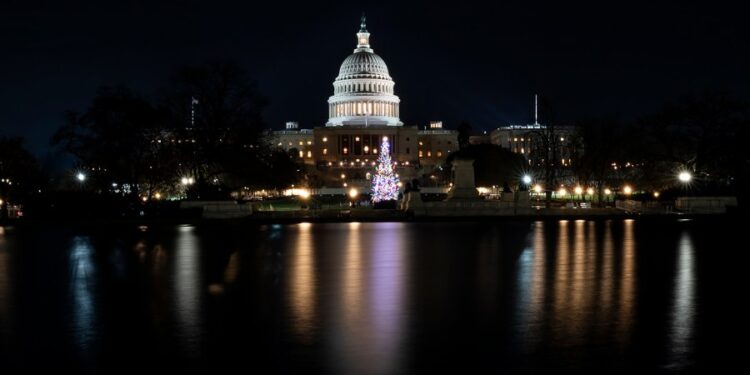
By a matter of minutes, the federal government averted yet another shutdown. Fingers are again being pointed to determine what went wrong. No doubt political polarization, a dysfunctional Congress and meddling by President-elect Trump and Elon Musk are causes.
But the bigger problem is that the budget process is broken and needs a complete overall. American history may be a story of budget fixes that failed, but something needs to be done.
The starting point is repealing the 1917 act that created the debt ceiling, then adopting legislation enabling an automatic continuing resolution if no budget is agreed upon in a timely fashion.
Political scientists V.O. Key and Aaron Wildavsky once declared that budgeting is about priorities; it is about what we value and how much money we are willing to spend to achieve goals. Yet rarely has there been a consensus on what we value. With 100 senators, 435 House members and one president, the incentive is to spend to please constituents — yet not impose new taxes.
As a result, the U.S. government has always had a budget problem. Before World War I, there was no federal budget. If money was needed, the president asked for it and Congress wrote the check. Such a process worked when the government did not spend much, but changes in the economy and WWI pointed to the need to have a budget so that the government could spend more efficiently.
The 1917 Second Liberty Bond Act imposed a statutory ceiling on U.S. debt, requiring Congress to vote to increase the debt ceiling. The belief was that the ceiling would impose fiscal discipline. Subsequently, the 1921 Budget Act was the first effort to create a budget process for the American government. It mandated congressional budget committees to centralize the budgetary process, as well as the Bureau of the Budget (later the Office of Management and Budget) in the executive branch to bring some order to federal spending.
Yet the Great Depression and World War II tested the limits of the 1917 and 1921 acts. Then the Vietnam War and the Great Society programs of the Johnson presidency came together to create significantly larger federal spending and disputes over it. President Richard Nixon refused to spend money allocated by Congress, which led to the passage of the 1974 Congressional Budget and Impoundment Act.
This law is the basis of modern federal budgeting. It created the Congressional Budget Office, mandated times and dates for budget passage and required a presidential budget. The president proposes a budget and Congress is supposed to pass an annual budget before Oct. 1, every year.
If a budget is not passed, either there is a government shutdown or Congress and the president agree to a continuing resolution to keep the government funded. A continuing resolution is simply a temporary funding mechanism agreed to by Congress and the president to keep the government funded until they can reach agreement on a budget or another continuing resolution.
This law took effect in 1976. While good in theory, it has never worked well. Nor has the debt ceiling accomplished its objective. A good budget process only works if there is a consensus on values and spending. But the two parties have become more polarized, leading to more disagreements over taxing and spending priorities. Since 1976, only four budgets passed on time (the last time was in 1996). Most of the time, the government is operating on continuing resolutions.
Since 1976, there have been 22 budget or funding gaps, with 10 of them leading to federal employees being furloughed. Moreover, only from 1998 to 2001 has this process produced a balanced budget. A law meant to bring order and discipline to the budget process has failed.
The lesson of the last 50 years is that polarization is only part of the problem. The threat of government shutdowns because of failing to pass a budget or increasing the debt ceiling has empowered brinkmanship, not timely compromise.
Over time, other gimmicks, such as presidential line-item vetoes, proposals for balanced budgets constitutional amendments and the Gramm-Rudman Act of 1985 to mandate automatic budget cuts have failed to bring fiscal discipline. There is no indication that polarization will decrease in the short term or that a consensus on spending priorities will emerge.
The only solution is to accept reality and do damage control. It is costly to shut down the government or play gamesmanship with the budget. Two reforms are needed as partial fixes.
First, Congress needs to pass a law repealing the authorization to increase the debt ceiling. Second, the law should mandate that if no budget goes into effect by Oct. 1, the current budget plus inflation would automatically go into effect until such time as Congress replaces it with a permanent budget.
While there are many problems with these solutions, the main virtue is that they remove the threat of a government shutdown, taking away the ability of a few extremists to extort the current process and ensuring more stability in the government process.
David Schultz is a Distinguished University Professor and the Winston Folkers Endowed Distinguished Faculty Chair in political science at Hamline University.
Copyright 2024 Nexstar Media Inc. All rights reserved. This material may not be published, broadcast, rewritten, or redistributed.






